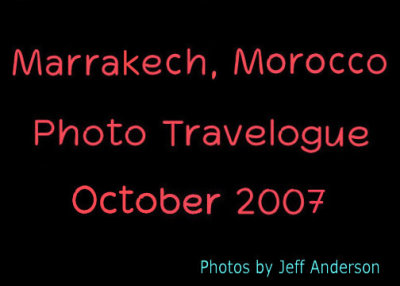
Marrakech, Morocco cover page. |

Map of Morocco with the star indicating Marrakech. |
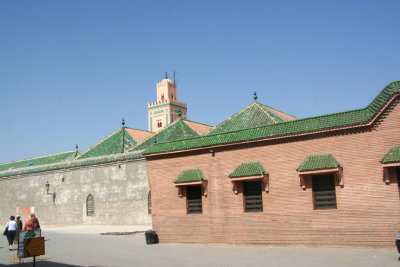
Background view of the Ali Ben Youssef Mosque, the oldest mosque in the medina of Marrakech. |
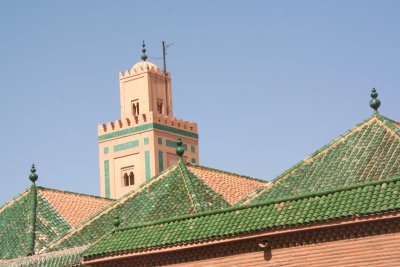
View of the minaret of the mosque (constructed in the 12th century by the Almoravid sultan Ali Ben Youssef). |
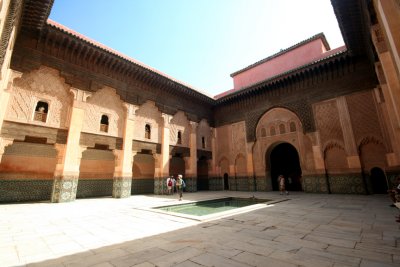
The interior courtyard of the 16th century Medrassa Ben Youssef (a 12 year school for students). |

Fountain in the medrassa. To prove themselves, students had to wash 3 times at the fountain with only their right hand. |
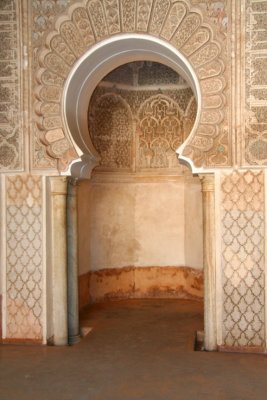
Entrance door to the "room of prayer" at the medrassa. |
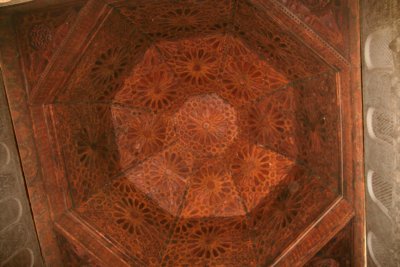
An elaborate cedar ceiling in the room of prayer. |

View of a beautiful ceiling in the medrassa. The architecture is a combination of Berber and Arabic. |
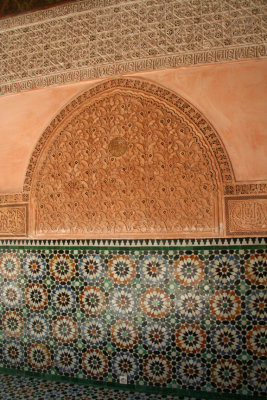
Architectural details and mosaics in the Medrassa Ben Youssef. |

This is part of the room of ablutions (the washing area and public toilette used by the students). |

Entrance to the area where the students slept. |

A decorative support column in the medrassa. |
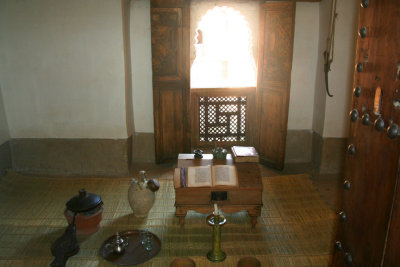
A view of the inside of a student's room with a reading table. |

A decorative skylight in the Medrassa Ben Youssef. |
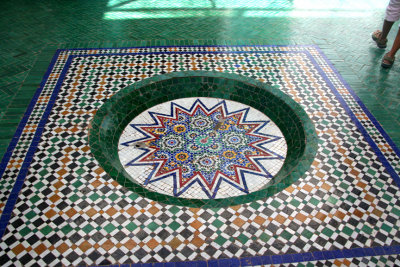
Interior fountain in the Marrakech Museum, located in a 19th century palace built by Mehdi Mnebhi, a former minister of defense. |

View of the interior of the "big house" of the palace (which is now the Marrakech Museum) with a large chandelier. |

In the summer months, the people lived in the downstairs of the palace because it is cooler. |
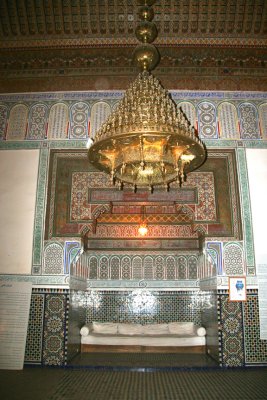
A beautiful chandelier and a seating area with mosaics in the background. |
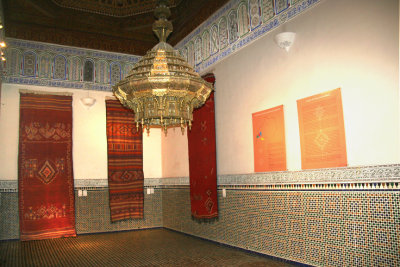
A display of rugs in the Marrakech Museum from the sauna room. |
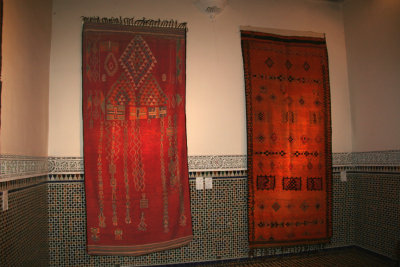
There is red in all of the rugs because the colors signify the house that they are in. |
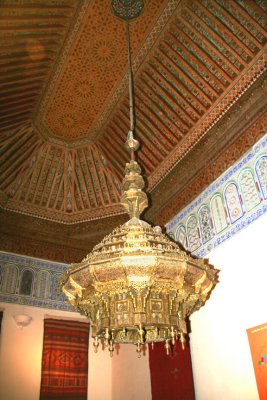
Chandelier and one of many beautiful ceilings seen in the museum and other buildings in Marrakech. |
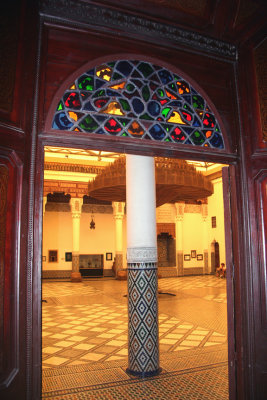
Door with stained glass looking into the interior of the big house. |
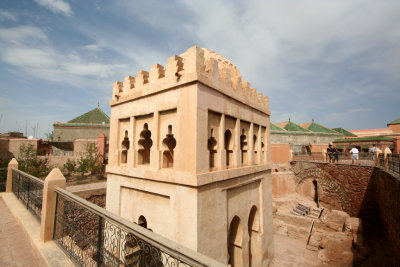
A tower of La Qoubba in Marrakech, which is an elaborate water system and cistern similar to what was used in Roman times. |

A view of La Qoubba along the side of the tower. |
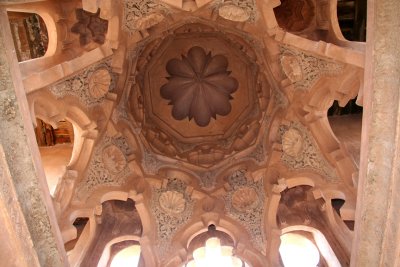
The ornate interior ceiling of the tower of La Qoubba. |

A pipe that leads into the cistern which is similar to what was used in Roman times. |

Interior view of La Qoubba with underground chambers where water once flowed. |
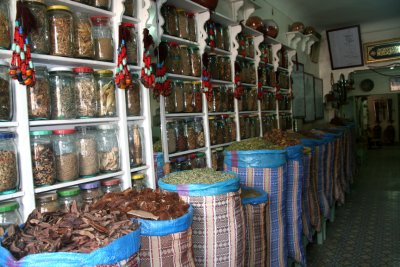
The tour guide took me to the spice museum in Marrakech where they sold herbal medicines. |
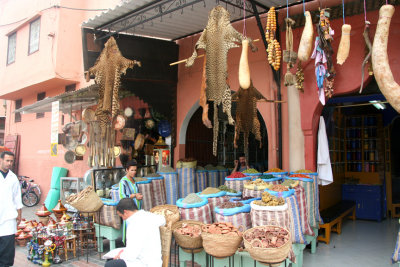
A view of the outside of the spice museum with the tour guide in the background. |
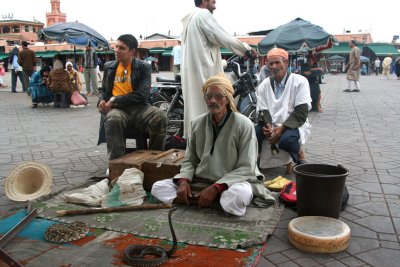
Snake charmers in the biggest square in Marrakech called Place Djemaa El-Fna. |

Close-up of the snake charmer at Place Djemaa El-Fna in Marrakech. |
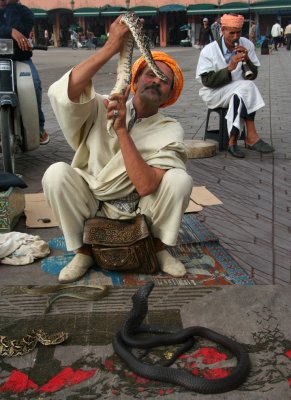
It cost me 20 Moroccan dirhams (about $2.50 U.S. dollars) to get this snake charmer's photo! |
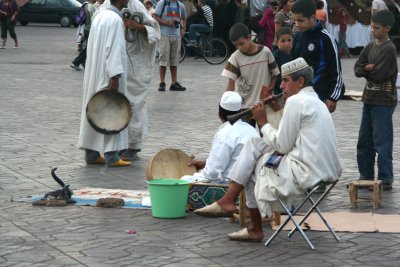
More snake charmers in Place Djemaa El-Fna. |
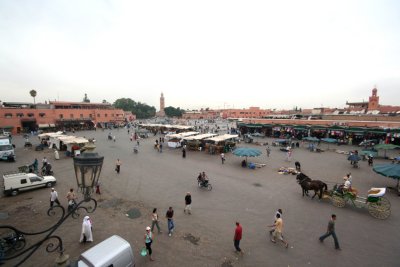
I went to a Moroccan pizza restaurant overlooking the square, which was ideal for taking photos. |
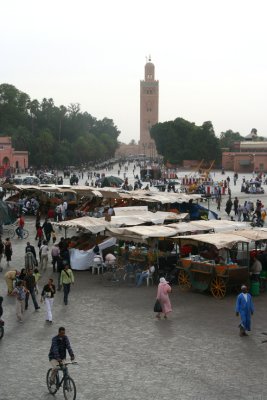
View of some of the vending carts on Place Djemaa El-Fna. |
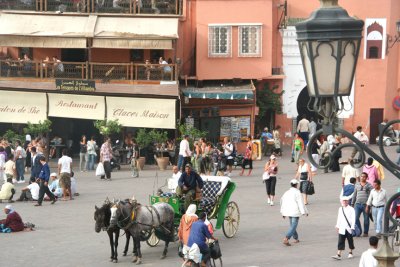
A view looking down at Place Djemaa El-Fna below with a street lamp in the foreground. |
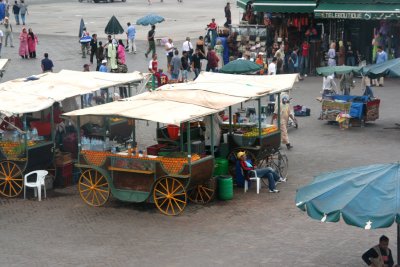
Many of the carts sold freshly squeezed orange juice, which was delicious. |
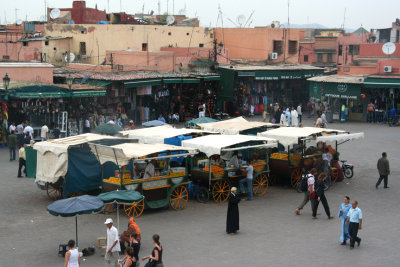
More orange juice carts below. |
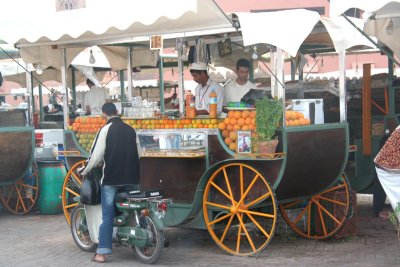
Close-up of an orange juice cart. |

Crowds of people were standing in the square in front of the vending carts. |
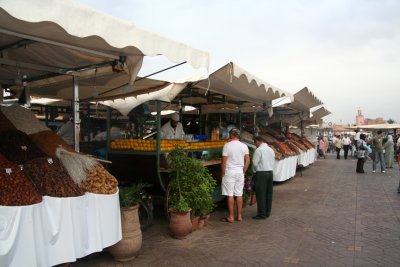
View of a long line of vending carts in Place Djemaa El-Fna. |
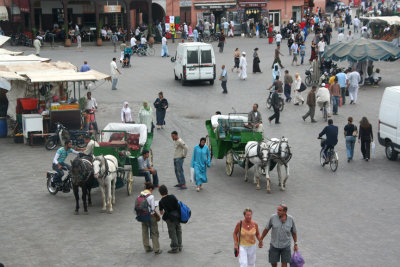
Some of the traffic of people and horse drawn carriages below. |
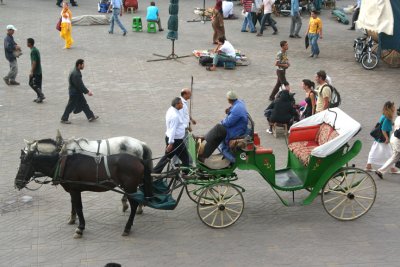
The horse drawn carriages are mostly for tourists. |

It looks like an argument was ensuing between the carriage driver and this guy on a motorcycle! |
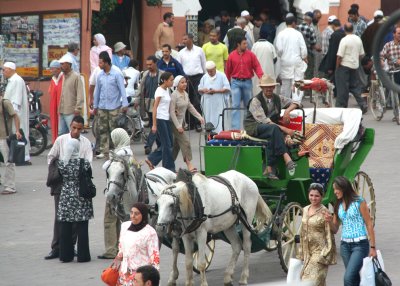
There was a lot of pedestrian traffic in the square that day. |
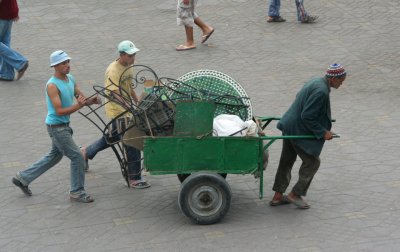
These 2-wheeled carts are used to haul things in the medina. That's how I got my suitcases to the riad. |

Two mysterious-looking women were engrossed in conversation. |

Exotic-looking Moroccan woman sitting in front of a colorful umbrella at Place Djemaa El-Fna. |
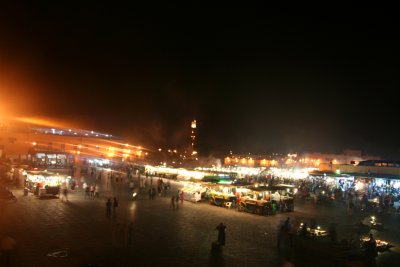
View of Place Djemaa El-Fna at night from the balcony of the Moroccan pizza restaurant. |
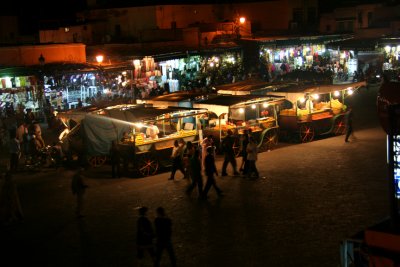
People strolling in front of the orange juice stands. |

Close-up of the orange juice stands at night. |

Me sitting on a wall of the Moroccan pizza restaurant overlooking Place Djemaa El-Fna. |
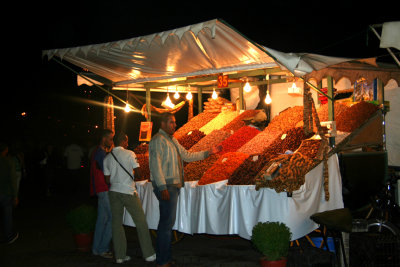
People shopping at a stand that sold fruit and nuts. |
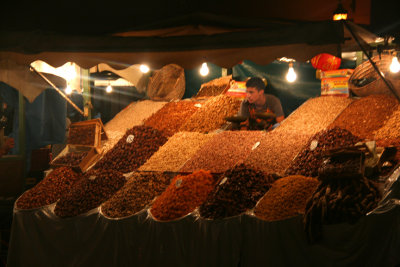
Close-up of the fruit and nuts stand at Place Djemaa El-Fna. |
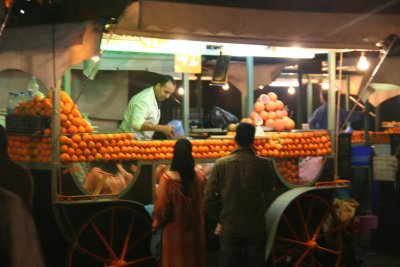
People quenching their thirst at the orange juice stand. |
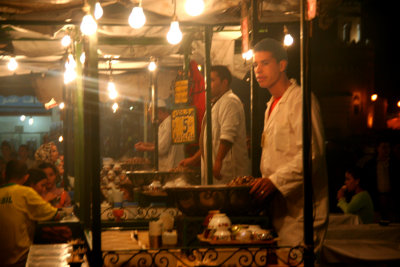
Chefs preparing food at a food concession stand in Place Djemaa El-Fna. |
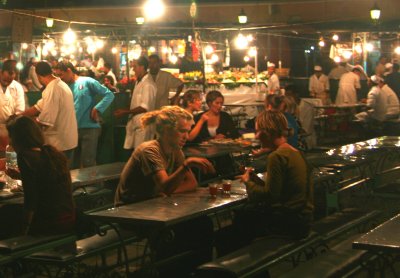
A couple having a drink in the square. |
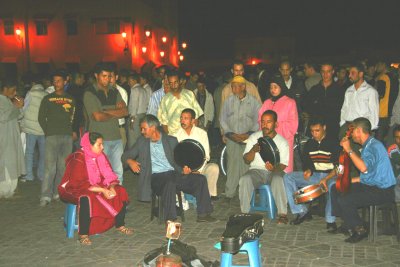
These musicians were performing in Place Djemaa El-Fna at night. |
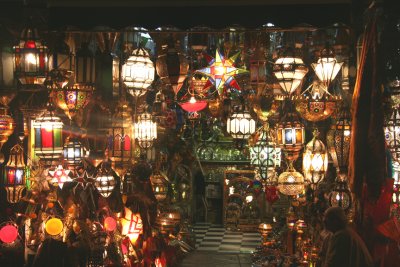
A Moroccan lamp shop with illuminated lamps off of the square. |
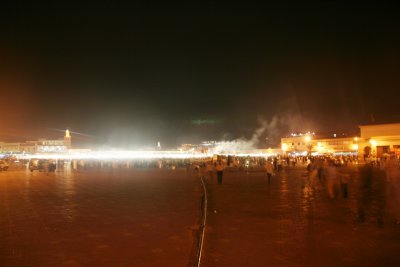
An atmospheric view of Place Djemaa El-Fna with a myriad of acetylene lamps glowing at night. |

View of the minaret of the Koutoubia Mosque at night, the tallest (70 meters) and most famous landmark in Marrakech. |
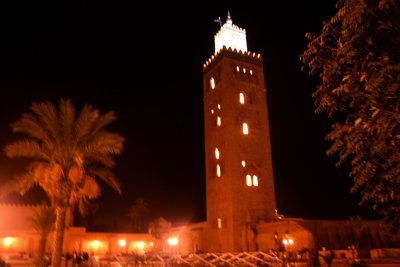
Side view at night of the minaret of the Koutoubia Mosque. It is the one that is visible from Place Djemaa El-Fna. |
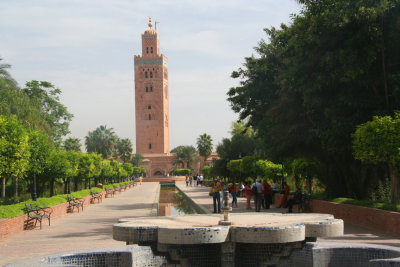
View of the minaret of the Koutoubia Mosque in Marrakech during the daytime. Only Muslims are permitted to enter it. |

The minaret, like the mosque, is a jewel of Almohad art, built for Abd al-Mumim and finished by Yakub al Mansur (1184-1189). |

It is built of pink sandstone and is known as the book vendors' mosque because more than 200 bookstore stands surround it. |
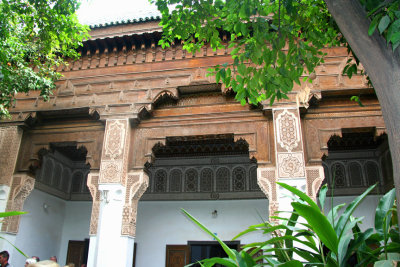
Bahia Palace which was built by Si Moussa, the prime minister of king Sidi Mohamed Ben Abderrahman, and by his son Ba Ahmed. |
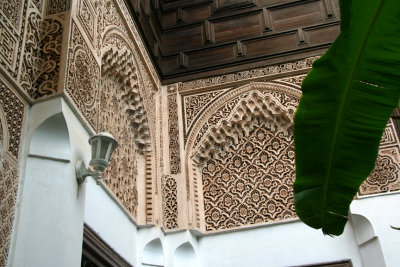
View of some of the architectural details in the receiving area (courtyard) of the palace, which was built in the 19th century. |

Fireplace with beautiful mosaics in the living area where the prime minister lived. |
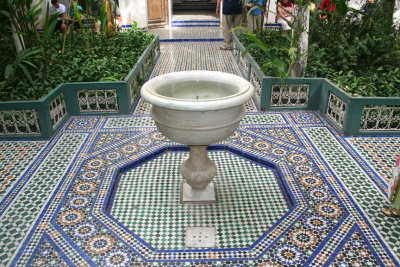
View of the fountain in the courtyard, which has been redone since the time when the prime minister lived there. |

This is the receiving room in Bahia Palace where the prime minister met dignitaries. |

A view of the ceiling in the receiving room. All of the ceilings in the palace are magnificent and different. |
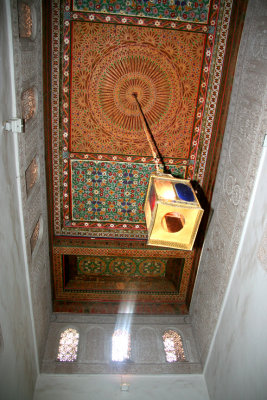
Here is another magnificent ceiling in Bahia Palace with exquisite colors and inlay work. |
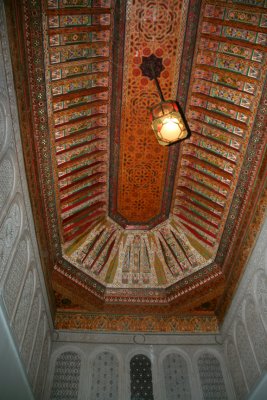
And here is yet another gorgeous ceiling in the palace! |

This room was reserved for the 4 wives of the first prime minister who lived in Bahia Palace. |

In 1933, the law changed so that the prime minister can only have 2 wives (if both wives agree to it). |

Detail of a door off of the room that was reserved for the 4 wives of the first prime minister. |
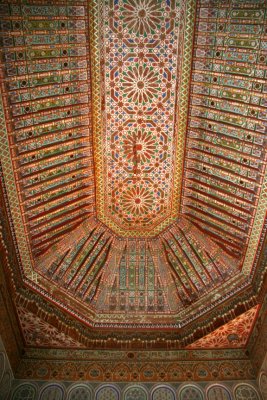
Detail of a ceiling over the room of the first prime minister's favorite wife. |
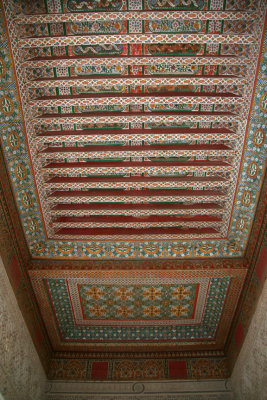
Another beautiful ceiling in the palace. |
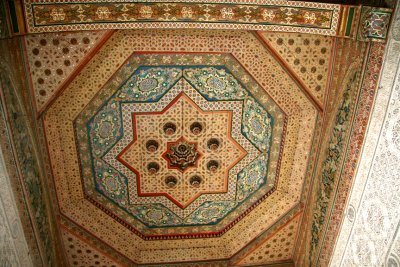
Another ceiling close-up in the Bahia Palace in Marrakech. |
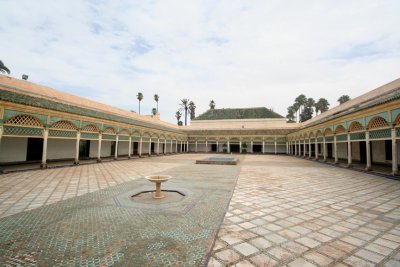
Outdoor courtyard where events and festivals took place in the Bahia Palace. |

Ornate door off of the courtyard. |
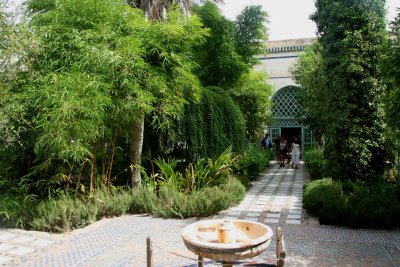
Internal garden for the wives of the prime minister. The wives were not allowed outside the palace. |

This room was a study for student lessons held in the palace. |
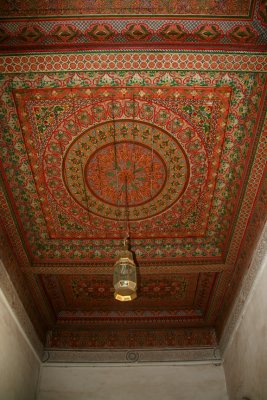
The ornate ceiling above the study area. |
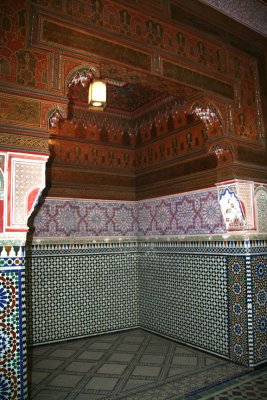
This smaller room off of the study was a room for the professor who taught the lessons. |
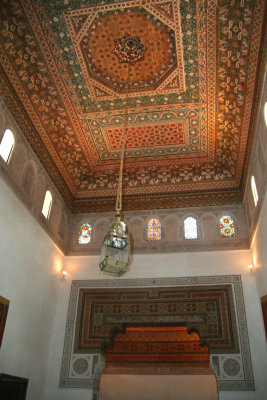
Ceiling over the apartment of the prime minister (where he would break in his wives). The stained glass is in the Iraqi style. |

Exterior view of the Saadian Tombs, which came into being when Sultan Moulay Ahmed al-Mansur buried his mother there in 1591. |
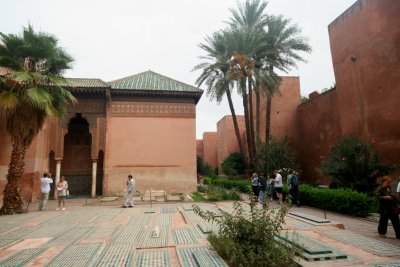
The tombs are arranged in two separate mausoleums that overlook a garden. The tombs were discovered in 1917. |
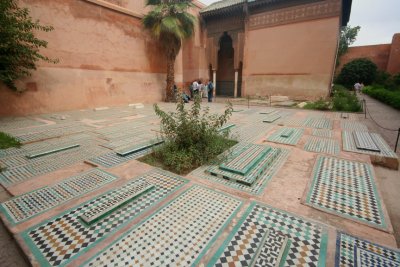
Each rectangle represents a different person. Entire families are buried here. |
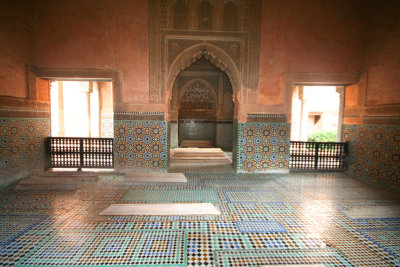
Interior of one of the mausoleums of the Saadian Tombs. |

Another room in one of the mausoleums. |
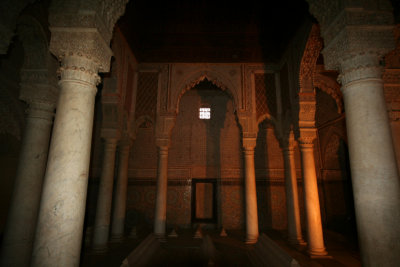
This room is considered to be a masterpiece of Hispano-Moresque art and is known as "the room of 12 columns." |
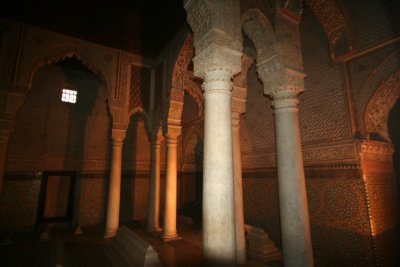
All of the columns are made of Carrara marble. |
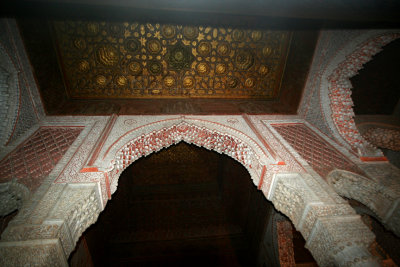
The exquisite gold ceiling of this mausoleum is also noteworthy. |
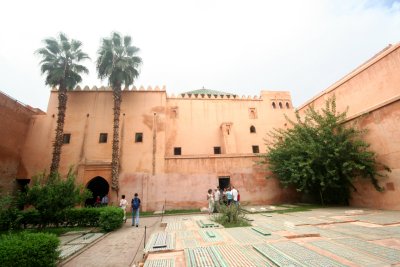
View of the Saadian Tombs as I was leaving. They are made of stucco which was originally white, but changed color due to dust. |
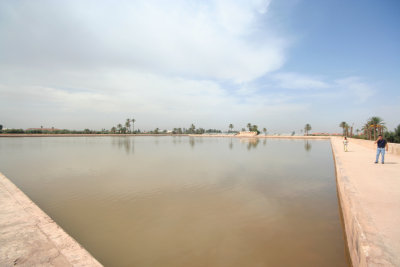
View of the large pool in the Menara Gardens, which is known for its mineral waters. |
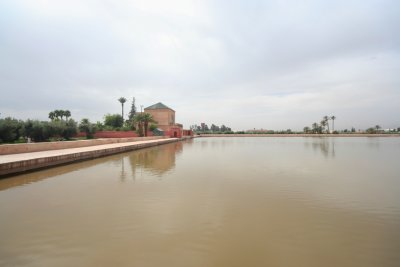
People of Marrakech used to come here to bathe since it was supposed to have curative effects. |

The large pool reflects the pavilion, which was built around 1866 allegedly for the Sultan to woo his mistress! |
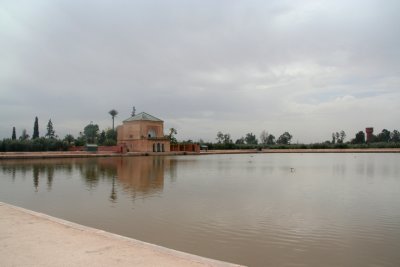
Another view of the pavilion and of the Menara Pool. |
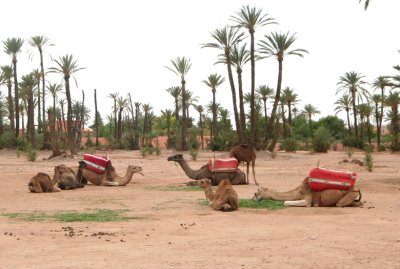
My tour guide drove me by these camels in their natural habitat in Marrakech. |

The last thing that I saw on my tour was the seven monuments to the seven saints of Marrakech. |











